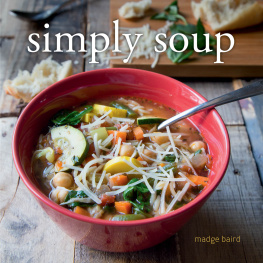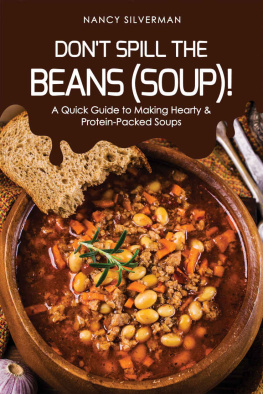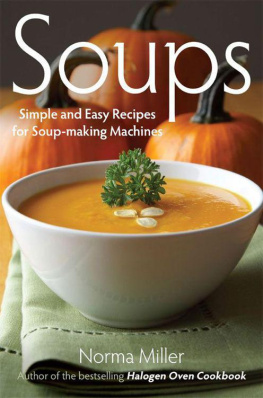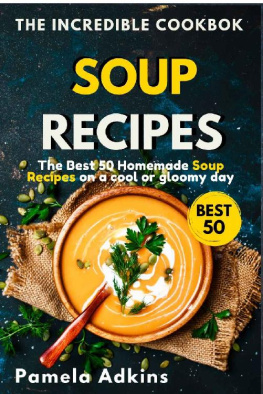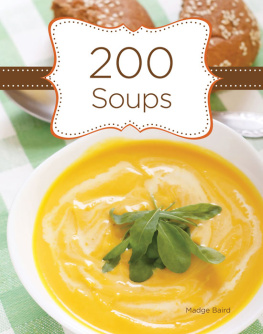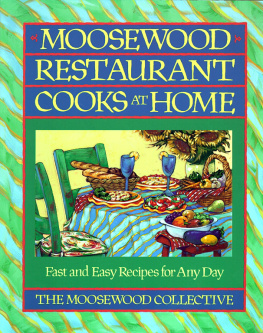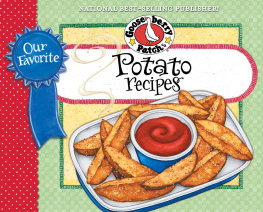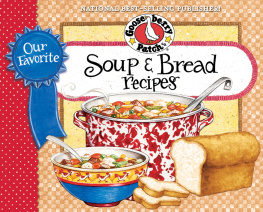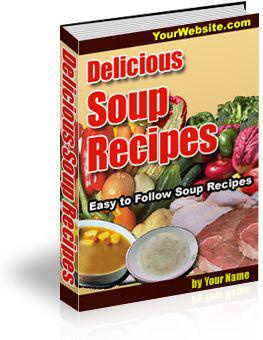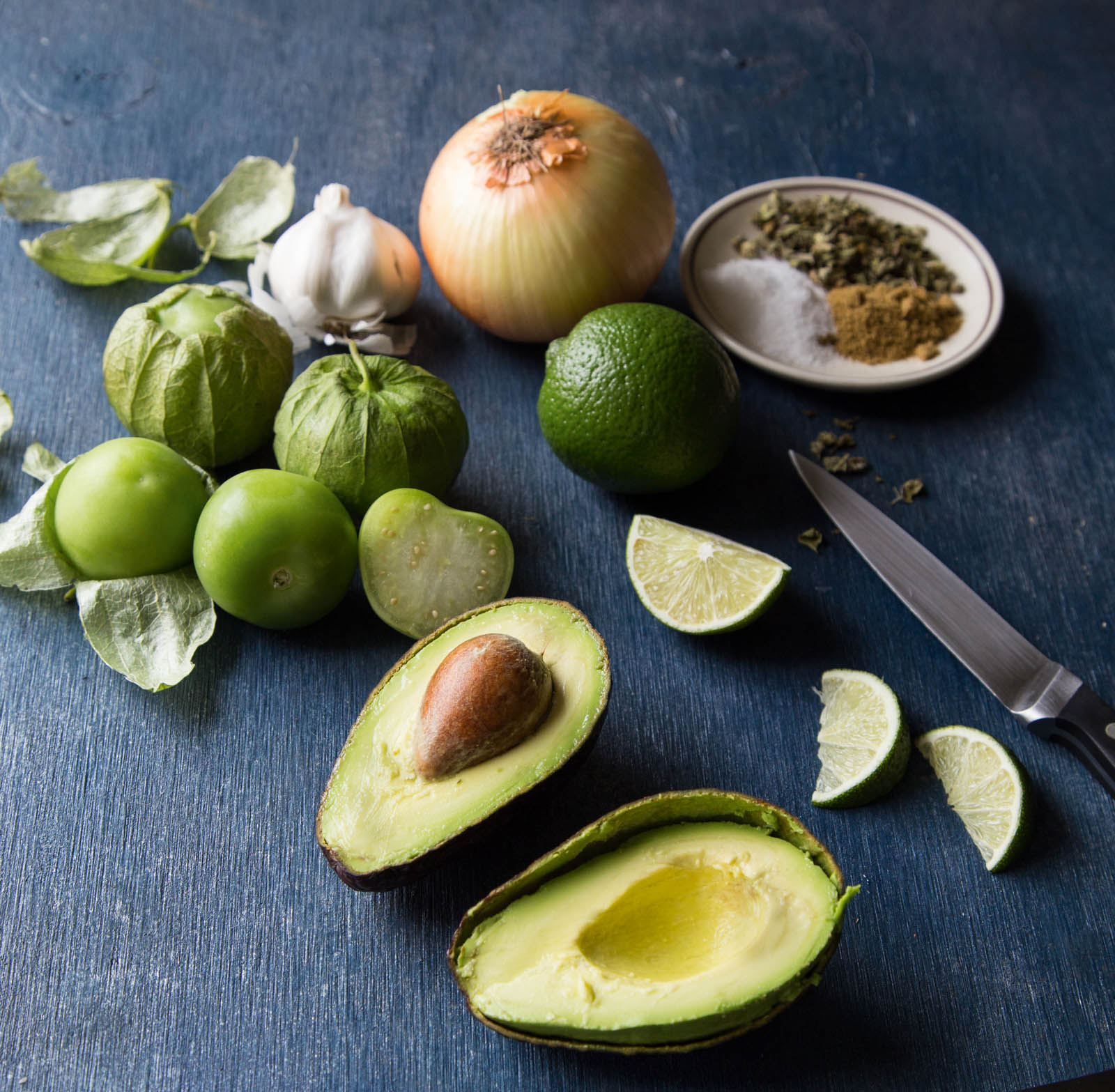introduction
There are as many kinds of soup and ways to make it as there are people on the earth! At least thats what it seems like to me. Take a simple tomato soup, for instance: you can make it using canned tomatoes or home-jarred goods; or you can step out to the garden (or visit a farmers market) and choose succulent fresh tomatoes to start your soup; different tomato varieties will produce different flavorful results. You can add herbs or spices, hot sauce if you wish, or a little bit of sugar to bring out the tomatoes' natural sweetness. You can add other vegetables and blend them all together, as in my . Or you can leave them chunky.
All this is to say that the recipes in Simply Soup reflect the way I cook, but they are just starting points for you to develop your own signature soups that your family and friends will gobble down and then sit back and smile over. You can adapt most of these recipes to be vegetarian if that is your preference. You can change the type of meat or use more or less meat than the recipe calls for. I use meat more like a flavoring ingredient in soups, so I tend to use modest amounts cut into small pieces. That doesnt mean you need to. If your household is full of meat eaters, or if you want to use up all of a leftover chicken or roast, dont worry about a couple of cups extra meat in the stew. Just adapt the liquid as you go so the balance between liquid and solids is satisfying to you. I prefer my pured soups thick; if you like yours thinner than the recipe turns out, increase the amount of liquid at the end, but be sure to taste and rebalance the flavors.
The most important part of soup making is learning how to create a pleasing base, or underlying flavor. What does a teaspoonful of broth taste like on its own? Strive for a pleasant flavor that is neither bland nor salty. The base should support the other ingredients, not overpower them. However, no star ingredient can overcome a flavorless base. Be mindful when adding bouillon, as it is salty. I recommend experimenting with several brands until you determine which ones you like best. Always add in small increments; taste; adjust. Learn to trust your own palate.
A word of warning: time and again I have seen soups grow out of their pots and require subdividing. It starts innocently: I think I'll put in three potatoestwo doesn't look like enough, and so on. This is a wonderful thing, because now there is a bounty of delicious soup to share with neighbors! I generally ladle it into quart jars; a quart is about the right amount for two generous meal servings or four restaurant-size servings. Ive never had anyone turn down an offer of a quart of soup, and Ill bet you wont either.
I use mostly basic ingredients and basic spices and herbseverything can be found in a well-stocked supermarket; there is nothing exotic or hard to find. I dont actually measure with spoons or cups. I use the taste and adjust method: that is how creativity comes in. There are times when I have finished creating a soup and feel the flavor could benefit from a little something more to make it memorable. I have found that my favorite homemade is that something extra, so I share the recipe with you. There is something tremendously satisfying about creating a nutritious soup that people enjoy eating.
In times past, making a pot of soup was a way that frugal housewives used up bits of vegetables and meat remaining at the end of a week, rather than letting them spoil or go mushy. I like that idea very much and hope that the recipes here will light a spark in all of us to be more frugal, reduce our food waste, and fill our kitchens with delicious smells of simmering soup or stew. Invite someone over for a bowlful: all you need to add are hunks of bread and some welcoming conversation. These simple soups are for youand for anyone you care to invite!
basil pesto
Homemade basil pesto is my secret ingredient for salvaging soups that need just a little something extra at the end, an enhancement that will take them from mundane to mouthwatering. I use it in vegetable and potato-based soups and meat varieties. To determine whether it would make a good addition to your soup, test a tiny bit in a quarter cup of the soup you are making; if you like the flavor, add a tablespoon or two, or more, to the whole pot. Taste and adjust.
Makes about 2 pints
1-1/22 pounds basil leaves
23 cloves garlic
1/31/2 cup nuts (raw cashews, pecans, or walnuts)
1/23/4 cup finely grated Parmesan cheese
Juice of 1 lemon
Good-quality extra virgin olive oil
Place all ingredients except the olive oil into a food processor or blender. As soon as you begin processing, start pouring in the oil and continue adding until the pesto is a consistency you like. I prefer a tight (spoonable) pesto, without a lot of extra oil; but if you prefer a looser (pourable) pesto, then add more oil. Store pesto in small jars and refrigerate for up to 3 weeks; add a thin film of oil over the top of refrigerated pesto to help retain its color. For longer storage, freeze in jars or as cubes.
starter soups
tomatillo-avocado soup
If you love avocados, youll love this soup. It is a creamy, palate-pleasing starter dish for a meal of fresh tacos. Enjoy it heated, at room temperature, or chilled.
Makes 6 to 8 first-course servings
1 small onion, roughly chopped
1 clove garlic, minced
1 tablespoon vegetable oil
1 pound fresh tomatillos,* husks removed, roughly chopped
1 (14.5-ounce) can chicken broth
1 teaspoon salt
1/2 teaspoon cumin
1/4 teaspoon dried Mexican oregano
2 ripe Hass avocados, flesh removed from skins
1/2 cup fresh cilantro
1 teaspoon sugar
2 teaspoons lime juice
4 tablespoons heavy cream (optional)*
In a saucepan, saut the onion and garlic in oil over medium-high heat for 3 minutes. Do not allow to burn. Add the tomatillos, broth, salt, cumin, and oregano. Cover pan and let simmer for 7 to 10 minutes, until tomatillos are soft; remove from heat. Add the avocado, cilantro, sugar, and lime juice. Pure all together until smooth. Taste and adjust seasonings with salt, sugar, or cream. Reheat, or serve at room temperature or chilled.
*Choose some tomatillos that are lighter in color (riper) if you are picking from your garden and have the option. The darkest green ones are a bit too tart for this recipe. Cream will help mellow the tartness.
minty cucumber-melon soup
This cold soup is a refreshing first course for a spring or summer meal. You needn't worry too much about the size of the melon or cucumber: it all works out in the blender.

